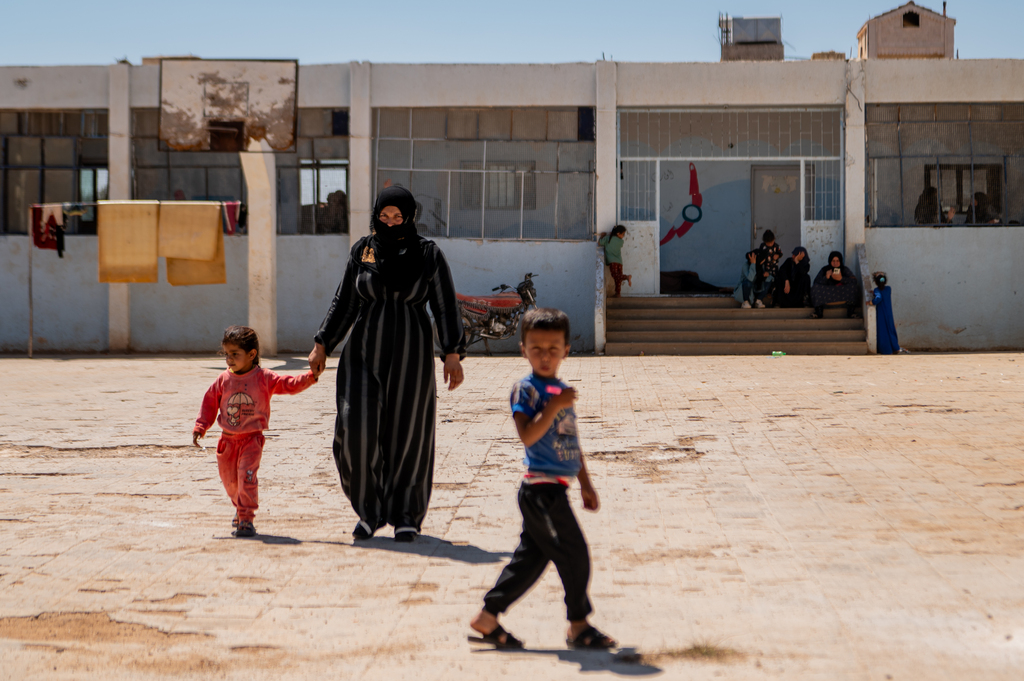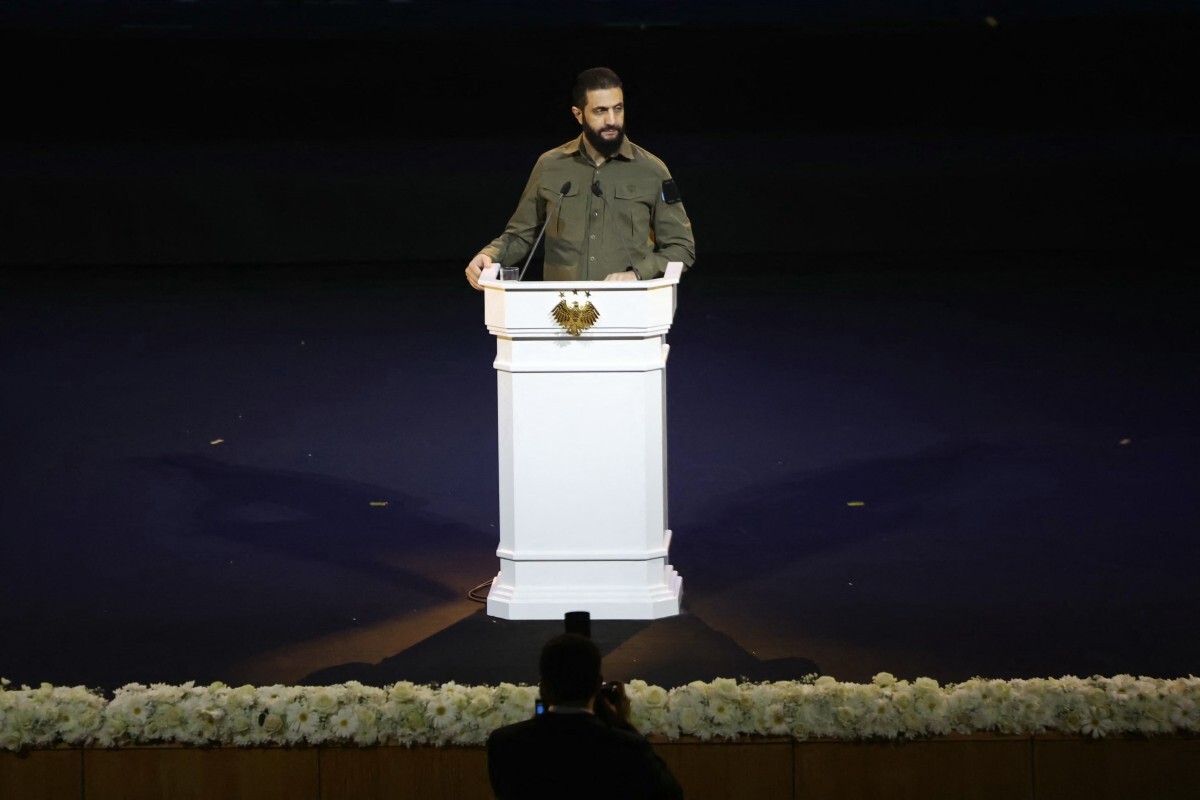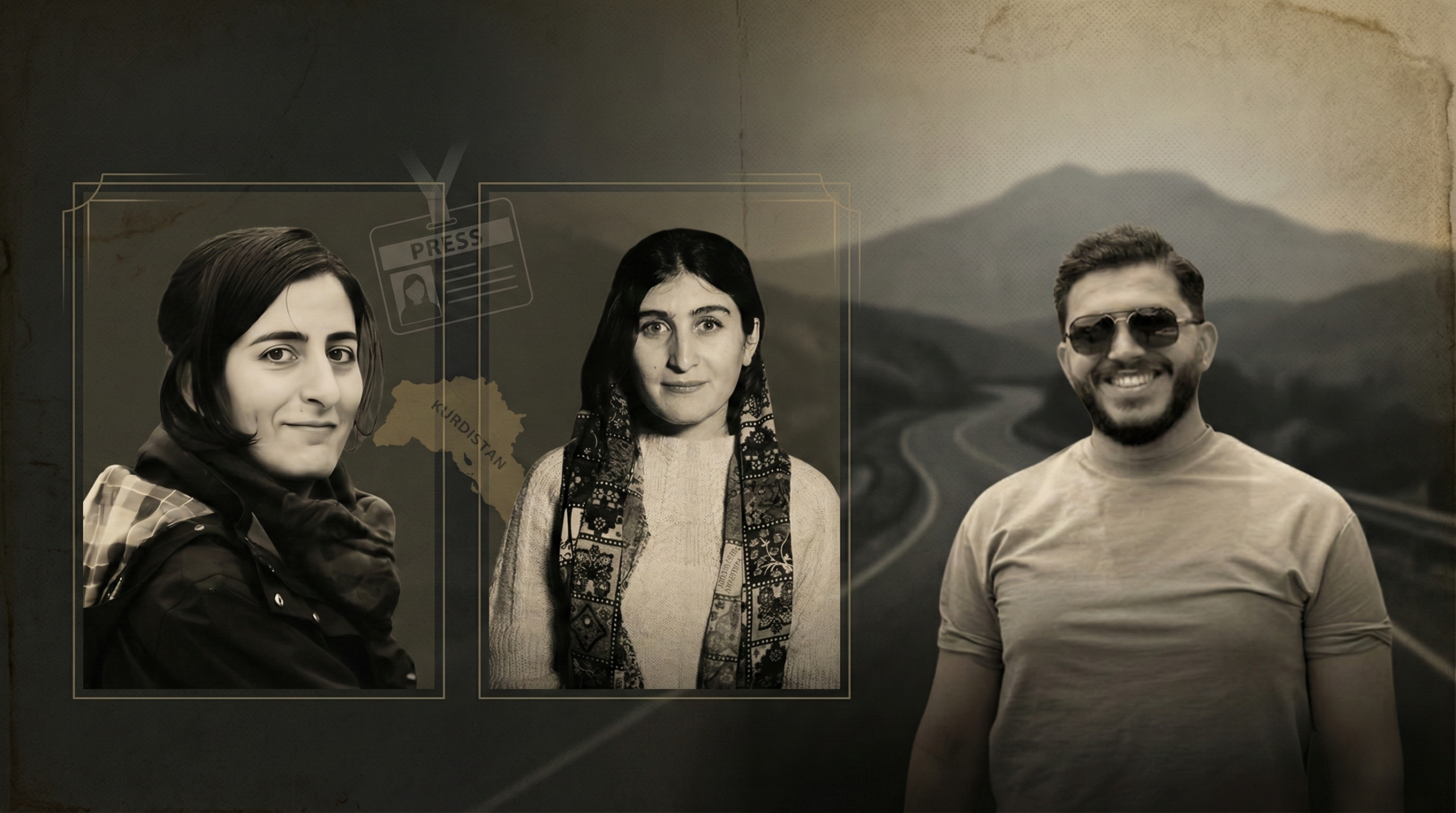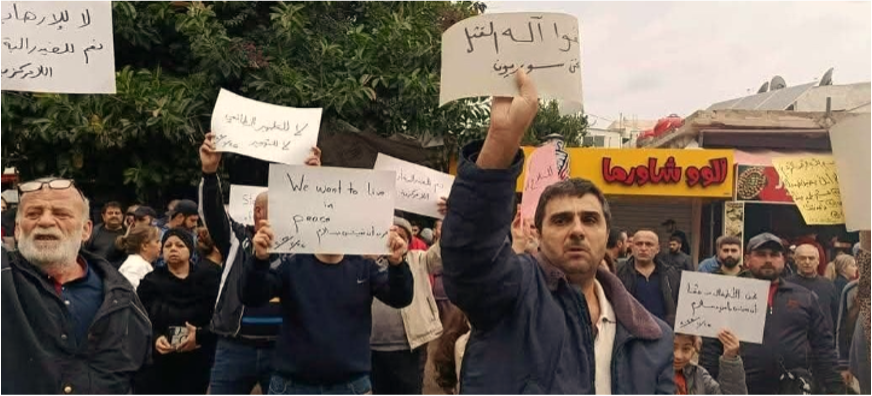Syria: A Testimony by a Foreigner Caught in the Suwayda Massacres
Photo Credits: Santiago Montag
Between February 28 and July 22, 2025, the author was in the Suwayda province in Southern Syria, where his family, belonging to the Druze community, resides. He witnessed the violent attacks carried out in July by the state’s Armed forces and Bedouin tribes against the community and its aftermath. This is his account.
On July 12, we spent a pleasant Saturday evening in Suwayda with some friends, including playing pool, ping-pong, and competing in a few games of Call of Duty. Just two hours earlier, we had been sitting on their apartment balcony, less than 300 meters from Omran Square, when gunfire and explosions echoed from the outskirts. Seeing my concern, our friend reassured me, “It’s the Bedouin families of Al-Maqwas [a Bedouin neighbourhood] fighting again.”
The next day, July 13, we returned to Al-Qurayya, a small town about 20 kilometers south of Suwayda, but the situation in Suwayda escalated rapidly in the afternoon. By evening, we learned that tribal armed groups had stormed villages along the provincial border with Deraa. Power lines in the province were cut by noon, but the phone network still worked. We received real-time updates from relatives—one working for the Red Crescent and another connected to the factions securing the town and the Bakka checkpoint just south of Al-Qurayya.
We also contacted a spokesperson from the Southern Tribes Gathering, whom we had met in June. He told us that their neighborhood was surrounded by Druze factions, with several wounded civilians trapped in the crossfire. By late afternoon, the hospital reported 7 dead and 32 injured people, including children and elderly victims targeted by sniper fire. The tribes reported two dead on their side.
On July 14, government forces and their tribal auxiliaries launched an assault on Suwayda.
Mortar fire and heavy weapons rained down on villages and the city. Three mortar shells fell on Al-Qurayya near the mausoleum of Sultan Basha al-Atrash, hero of the Arab revolts. We began to fear for our safety and considered fleeing further south.
On July 15, the friends who had been with us during the evening when the fighting began took refuge in Al-Qurayya with their whole family. They had managed to escape Suwayda just before government forces entered the city, crossing under the bridge used minutes later by those very forces to reach the city center..
Our contacts within the Druze self-defense factions, including Zyad Abu Tafish from the Mountain Brigade and Bassem Abu Fakr from the Men of Dignity spoke of massacres in the village of Al-Tireh, which Druze fighters briefly liberated at night. Over the next few days, we received fragmented reports. Three of my wife’s aunts were trapped in Suwayda, hiding in their apartments, praying they wouldn’t be targeted by random raids.
The power cuts worsened, and phone lines were shut down, leaving us to rely only on the Starlink connection and solar panels of a family member living next door. That equipment allowed us to stay connected to the outside world as fuel for cars ran low, shops ran out of goods, and fighter jets began to circle overhead. The streets of Al-Qurayya emptied, leaving only armed men on motorcycles and pickups with machine guns.
On July 17, despite claims of a ceasefire, social media was flooded with videos showing the humiliation and execution of Druze civilians. Bedouin confederations across Syria declared jihad and vowed to take over from the government forces. Reports spoke of 80,000 fighters converging on the province. The terror felt endless.
Then, on July 19, news came that Suwayda city had been retaken, with other occupied villages also being recaptured. My partner’s aunt and her husband managed to flee Suwayda and join us, as did another aunt from ‘Ira, a town that had opened its doors to government forces.
Despite the citizens’ willingness to compromise, the invaders had destroyed part of the city. Stories of atrocities surfaced: people killed by sniper fire, mortar bombings, and much more.
Despite the citizens’ willingness to compromise, the invaders had destroyed part of the city. Stories of atrocities surfaced: people killed by sniper fire, mortar bombings, and much more.On July 20, we made the decision to travel back to Suwayda city to document the aftermath of the massacres. We followed the husband of my wife’s aunt, whose nephew was in a coma after being shot by a sniper. It was one of the worst days of my life. Even before we reached the city, we saw burned-out apartments, cars riddled with bullet holes, and tanks upturned on the side of the road. In the city center, around the Mashnaqa roundabout, usually bustling with activity, there was only silence. One tank lay decapitated in the middle of the road, its turret flipped to the other side of it. Shops and market stalls had been reduced to ashes, and I was struck by the sight of watermelons, now shriveled like deflated balls.
As we approached Dignity Square, we found our first corpse—shot dead in one of the market alleys, already being eaten by maggots. At Dignity Square, young Druze fighters told us that a sniper had taken position in the mosque minaret and forced them to return fire. We passed the governorate building and the Criminal Police headquarters, where the remains of a General Security vehicle, hit by an Israeli drone, lay in the street. On our way to the hospital, we saw civilian cars riddled with bullets, their seats soaked in blood. In the back of one car, a child’s bloodstained shoe lay abandoned.
At the emergency room, nearly a hundred bodies were piled up, waiting to be identified. Some had been exposed for days due to the ongoing fighting and power cuts, their bodies swollen and decomposing
At the hospital, a pick-up truck with a mounted machine gun took us through a scene of devastation. A crowd of Druze fighters guarded the entrance, and we met a nurse and a fighter who would guide us through the day. At the emergency room, nearly a hundred bodies were piled up, waiting to be identified. Some had been exposed for days due to the ongoing fighting and power cuts, their bodies swollen and decomposing. The young fighter explained how government forces had besieged the hospital and killed staff, including Druze members of General Security. Among the bodies were some Bedouin fighters, collected from the streets.
We visited several neighborhoods that day, witnessing the sheer scale of destruction. Thousands of flats and houses had been burnt. We saw execution sites, spoke to survivors, and encountered elderly victims burned alive. The horrors seemed endless. In the late afternoon, we found ourselves at the building where we had shared that joyful evening just a week before. Around Omran roundabout, where the statue of Sultan Basha al-Atrash had stood, three bodies lay in the street, one of which seemed to have been dragged behind a car. Bedouin tribes had left their marks on the walls, signing their crimes.
We returned to Al-Qurayya in shock and silence, our clothes soaked with the smell of death.
Two days later, we were evacuated to Damascus by the Civil Defense with the help of journalists.
We left Syria on July 25, our images and hopes shattered.
Cédric Domenjoud
Cédric Domenjoud is an independent researcher and activist based in Europe. His research areas focus on exile, political violence, colonialism, and community self-defense, particularly in Western Europe, the former USSR, and the Levant. He is investigating the survival and self-defense of Syrian communities and developing a documentary film about Suwayda, as part of the Interstices Fajawat project (interstices-fajawat.org).





